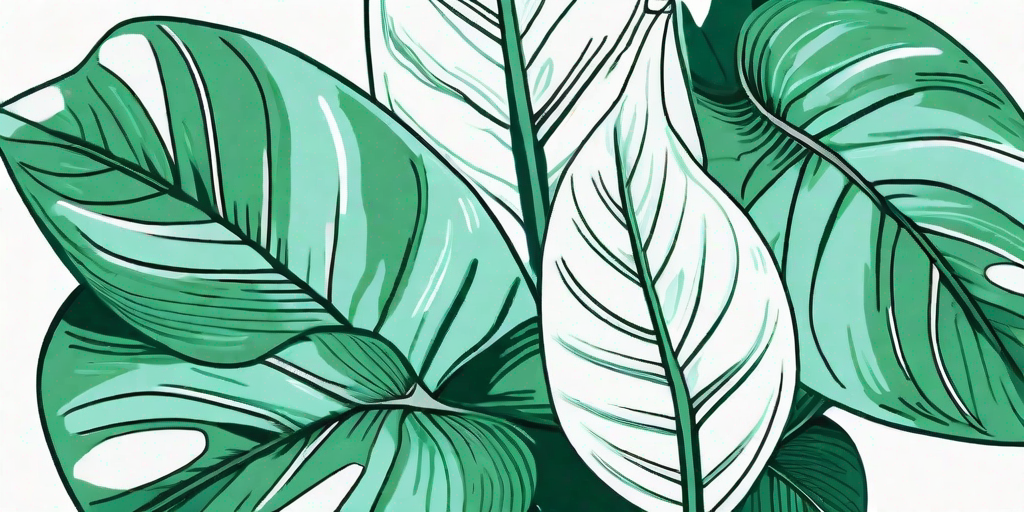
Welcome, green thumbs and plant enthusiasts! Today, we're diving into the lush, tropical world of the Dieffenbachia plant, also known as the Dumb Cane. This plant is a popular choice for indoor greenery, but it can be a bit of a diva when it comes to pruning. Fear not, for we have compiled a comprehensive guide to help you master the art of pruning your Dieffenbachia. So, roll up your sleeves, grab your pruning shears, and let's get to it!
The Basics of Dieffenbachia
Before we delve into the nitty-gritty of pruning, it's important to understand what makes the Dieffenbachia tick. This tropical beauty is native to the Americas and is known for its lush, variegated leaves. It's a hardy plant that can thrive in a variety of indoor conditions, but it does have a penchant for drama if not cared for properly.
Dieffenbachia plants can grow up to 6 feet tall, and their leaves can reach a whopping 1 foot in length. This means that regular pruning is not just a suggestion, but a necessity. Otherwise, you might find your living room turning into a jungle. And while we all love a bit of greenery, there's a fine line between 'urban jungle' and 'where did my couch go?'
Why Prune Your Dieffenbachia?
Pruning isn't just about keeping your Dieffenbachia from taking over your living space. It's also about maintaining the health and beauty of your plant. Pruning helps to promote new growth, remove dead or diseased leaves, and give your plant a more balanced, attractive shape.
Moreover, Dieffenbachia has a tendency to become leggy over time, with leaves falling off the lower part of the stem, leaving a bare, unattractive trunk. Regular pruning can prevent this from happening and keep your Dieffenbachia looking lush and full.
How to Prune Your Dieffenbachia
Now that we've covered the why, let's move on to the how. Pruning your Dieffenbachia is a simple process that involves just a few steps. But remember, this plant is a bit of a drama queen, so handle with care!
Step 1: Gather Your Tools
You'll need a pair of sharp, clean pruning shears or scissors. It's important to use clean tools to avoid introducing any diseases to your plant. You might also want to wear gloves, as the sap of the Dieffenbachia can be irritating to the skin.
Step 2: Identify What to Prune
Look for any yellow, brown, or wilted leaves. These are the ones you'll want to remove. Also, if your plant is getting too tall or leggy, you can prune back the main stem to encourage more bushy growth.
Step 3: Make the Cut
When pruning leaves, cut as close to the stem as possible. If you're pruning the main stem, make the cut just above a leaf node. This is where new growth will sprout from.
Step 4: Care for the Wound
After pruning, the cut areas will ooze sap. This is normal, but you'll want to wipe it off to prevent it from attracting pests. You can also apply a bit of cinnamon, which acts as a natural antifungal, to the cut areas.
Post-Pruning Care
After pruning, your Dieffenbachia might be a bit stressed. Give it some extra TLC by ensuring it has plenty of indirect light, watering it when the top inch of soil is dry, and maintaining a humid environment. With proper care, your plant will bounce back in no time and reward you with fresh, new growth.
Frequently Asked Questions
- How often should I prune my Dieffenbachia?
There's no set schedule for pruning. It depends on the growth rate of your plant and your personal preference for its size and shape. However, a good rule of thumb is to prune at least once a year, in the spring or early summer when the plant is in its active growth phase.
- Can I propagate the cuttings from pruning?
Absolutely! Dieffenbachia is easy to propagate from stem cuttings. Just make sure to let the cut end dry out for a day or two before planting it in soil.
- Why are the leaves on my Dieffenbachia turning yellow?
Yellow leaves can be a sign of overwatering, under watering, or a lack of nutrients. If you notice yellow leaves, check your watering schedule and the condition of your soil first.
Conclusion
Pruning your Dieffenbachia might seem like a daunting task, but with a bit of knowledge and practice, it can become a rewarding part of your plant care routine. Remember, a well-pruned Dieffenbachia is a happy Dieffenbachia. So, don't be afraid to give your plant a little trim. It might just thank you with a burst of new growth!
Happy pruning, plant parents!















